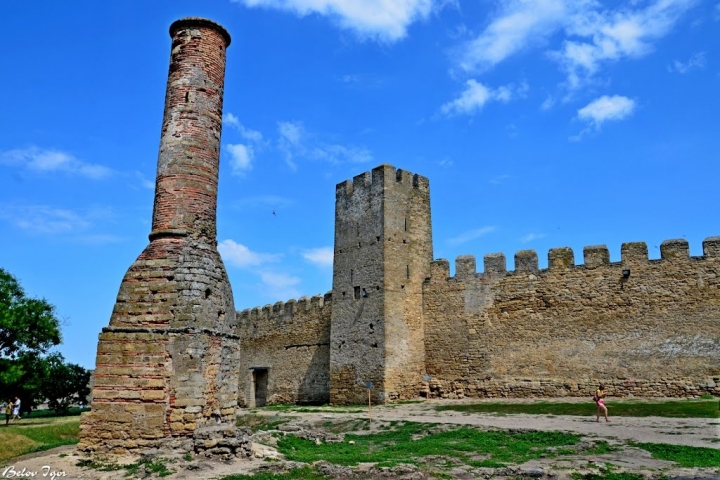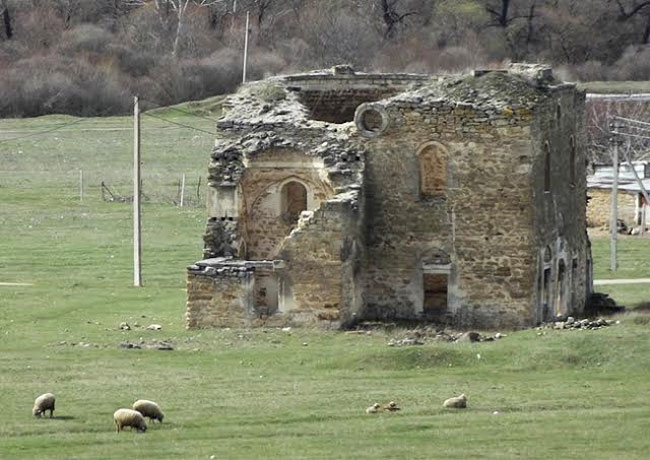If somebody makes the list of mosques that existed in the southern regions of Ukraine, no doubt that it will include more than one thousand Muslim religious places. Most of them were destroyed in the Russian-Turkish wars and the following annexation of territories that previously belonged to the Crimean Khanate and the Ottoman Empire.
At the time when Russian troops captured the Crimea in 1783, according to the archival documents, there were more than 1660 mosques on the peninsula. But after a few decades, the number started to decline rapidly. After the defeat in the Crimean War of 1853-1856, Russian government began a policy of repression against Crimean Tatar population. During the period 1860 — 1862, about 200 thousand Tatars were forced to leave the Crimea. As a result over 700 villages had been abandoned, some of which were subsequently settled by colonists came from the central provinces of Russia. By 1889, the number of mosques reduced to 737 and by 1921 only 632 mosques left, no more than 10% of which are extant.
For the first time, it was known about the building of the mosque in the south of Ukraine due to the work "Selçuk-name", which reported the campaign of Emir Hussam al-Din Chupan in Sudak. As a result of the successful campaign, Seljuks built the Muslim temple in the captured city. The triumph of the winners is described in the chronicle of Seljuks in high-flown manner: "The troops put on gala uniform. Also the richly decorated minbar was prepared; the main emir put the golden platter with the Holy Koran on the head, and took sultanic standard in his hand. So they entered the city in a grand manner. At the upland of the city, the muezzin called to pray... and a beautiful cathedral mosque was built in less than two weeks."
Probably, Seljuks' mosque was the only Muslim place of worship on the peninsula until 1314, when Khan of the Golden Horde, Uzbek, ordered to build the famous temple in the Old Crimea, which has remained to this day.
In addition to the Crimea, in the interfluve of the Danube and the Don, hundreds of Muslim places of worship were built, after Islam had become the state religion of the Golden Horde.
In 1542, the Ottoman Sultan, Suleiman the Magnificent, wrote in the letter to the Polish King, Sigismund the Old, arguing his claims on the land of the Northern Black Sea Coast, the following: "There are a lot of Muslim graves and mosques on those territories ... signs have not yet disappeared." A little later, Crimean Khan Sahib Giray I in his correspondence with the Lithuanian Grand Duke's court said: "Those lands... on the rivers Bug and the Blue Waters: Yarkgumakly Yan kgilungu" belonged to the Crimea "there were the proofs of that...".
In the village Mayaky (Odesa Oblast), which still exists today, Tatar mosque was situated from the earliest times. In the "chronological and historical description of churches under the eparchies of Kherson and Taurida regions", it is said: "Russians, who were of the chasovennaya sect (one of the confessions of Bespopovtsy or old believers), settled there, and built a chapel of stones ... taken from Tatar mosques and other ruins of Muslim buildings."
The report of Turkish historian-chronicler Ibrahim Peçevi shows the great number of Muslim population in the south of Ukraine in the early Middle Ages: "In the 1027 Anno Hijri (1618 AD) I has had an occasion to travel in the direction of Akkerman and Bender. Just in front of Bender were the ruins of a building with a lot of arches. There were the words, written with clear handwriting, near the entrance: This is the grave of Shirin ...; the rest of the inscription has been lost. Even now, on the plains of Ochakiv, you can see the traces of several cemeteries. The Koranic verses were engraved on some cemeterial stones as well as the words of confession (shahada); on the other stones you can see the inscriptions such as: Here lies a certain sheikh-ul-Islam, or sheikh, or mufti, or vizier, or mirza."
Dated to the beginning of the XVI century, Polish document from archive of Zamoyski family gives the unique information about numerous Muslim monuments, including mausoleums and mosques in the Bug-Dniester and the Dnieper-Bug interfluves. "From Tiahyn is half a day (journey) towards Kuchurgan, below Tiahyn is a mosque. After a one day journey from that Kuchurgan, also there is a mosque in Karagash. As well as a one day journey from Karagash to Kuyalnyk and you will see a mosque. From Kuyalnik two days journey to the Bug and Pischtschanyi Brid, where two mosques are situated. There is a mosque on the river Suhyi Chartali, where it flows into the Bug. The distance from Pischtschanyi Brid to Vytautas Bridge is six mile; the mosque is also situated there."
After joining of the South Ukrainian lands the Ottoman Empire and Crimean Khanate, a new period of active construction of Muslim places of worship began. Most mosques have been built in major cities: Kiliya, Izmail, Akkerman, Ochakiv.
The historian, lived in the middle of the XVIII century, S. Myshetsky, argued that "on the River Bug, at 200 miles distance from the liman, was a great city, called Chychykliya, where many mosques were; it had been built and destroyed by Turks."
In the description of Ochakiv steppe made by the engineer François de Wollant at the end of the XVIII century, we can find the record of the ruins of the mosque in the village of Ak-Mechet' (modern Akmechetka, Mykolaiv Oblast).
Due to the description of the traveler J. Romm, who visited Karasubazar (the Crimea) in 1786, it is possible to learn how the mosques, which have been lost, looked like. "The mosque is square. The elevation is full-width above the entrance into it. There are two large windows on the opposite wall, the shutters of which were closed from the outside, so the mosque was illuminated only with small windows at the top. Beside the large windows, at the corners, there were the rostrum on the one hand, and the reading stand on the other. Three chandeliers hung from the ceiling, consisting of several glasses that seemed to play the role of lamps, but they were not lighted up ... At the other mosque, the names of God, Mohammed and several other prophets are inscribed above the niche where the Koran is placed. This custom — to write the names of those, whom the believers offer up their prayers or worship, it seems to me, is not worse than the iconic images that adorn the other temples. "
The numerous evidences of historians and travelers say that for several hundred years, from the XIV century to the beginning of the XIX century, the southern Ukrainian lands were the territory of Islam. "Sudden" disappearance of entire cities, mosques, mausoleums, cemeteries was not the result of natural disasters or military actions, but was purposeful policy of the Russian Empire for the depopulation of the Muslim peoples of the Northern Black Sea territories and the destruction of their material culture.
You can find the other materials about "History of Islam in Ukraine" by clicking the following reference.
Olexander Stepanchenko specially for "Islam in Ukraine"





